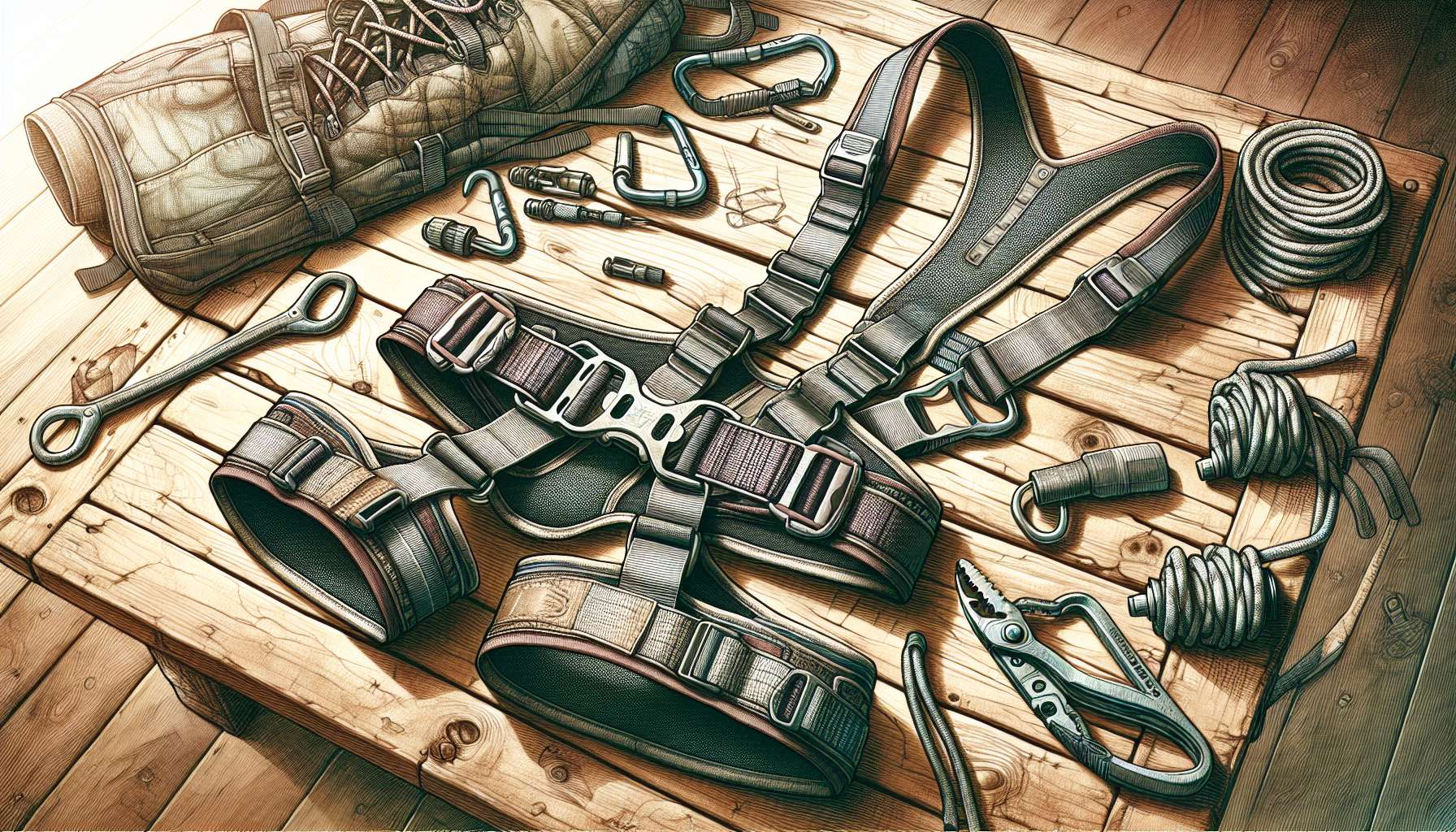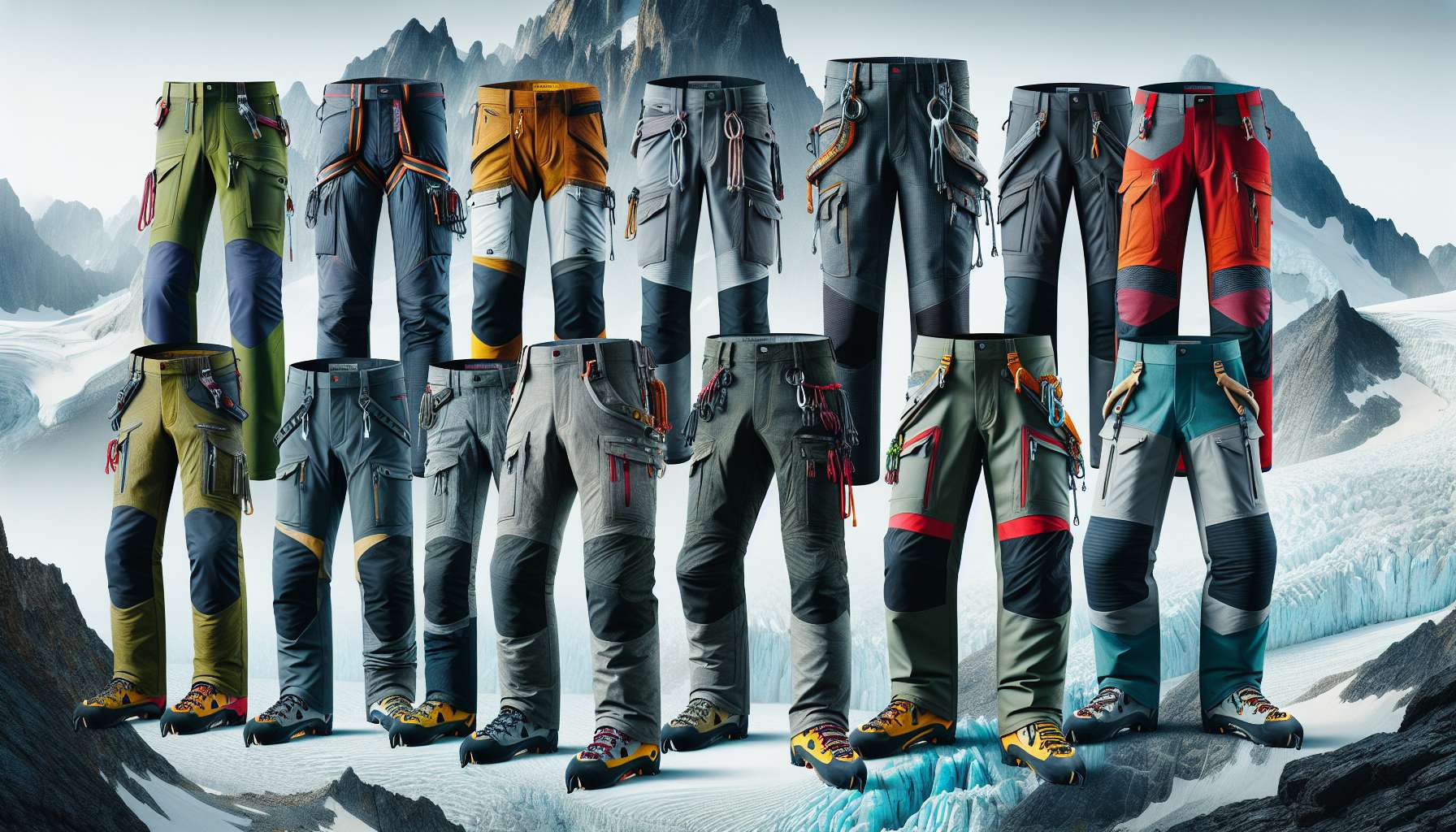The Ultimate Guide to Climbing Harnesses
Are you an aspiring climber looking to conquer new heights? Or perhaps a seasoned climber seeking to upgrade your gear? Whatever your level of expertise, one essential piece of equipment that should never be overlooked is the climbing harness. In this comprehensive guide, we will delve deep into the world of climbing harnesses, exploring their history, construction, types, uses, and much more. So, grab your chalk bag and ropes, and let’s embark on this exhilarating journey together!
The Evolution of Climbing Harnesses
Before we delve into the intricacies of modern climbing harnesses, let’s take a step back in time to explore their evolution. The concept of harnessing oneself for climbing dates back to the early days of mountaineering when climbers would use simple ropes tied around their waists for safety. As climbing techniques evolved, so did the harnesses. From rudimentary leather straps to the sophisticated designs we see today, climbing harnesses have come a long way.
One of the key milestones in the development of climbing harnesses was the introduction of the sit harness in the 1970s. This revolutionary design featured a waistbelt and leg loops, providing climbers with greater comfort and safety. Since then, harnesses have continued to evolve, incorporating new materials, technologies, and features to meet the demands of modern climbers.
The Anatomy of a Climbing Harness
Understanding the different components of a climbing harness is essential for choosing the right one for your needs. A typical climbing harness consists of the following key elements:
1. Waistbelt:
The waistbelt is a padded belt that wraps around the climber’s waist, providing support and distributing the weight evenly during climbs. It is usually equipped with gear loops for attaching carabiners, quickdraws, and other climbing essentials.
2. Leg Loops:
Leg loops are straps that encircle the climber’s thighs, preventing the harness from riding up in the event of a fall. They should be adjustable to ensure a snug and comfortable fit.
3. Buckles:
Most climbing harnesses come with adjustable buckles on the waistbelt and leg loops, allowing for a customized fit. It is crucial to ensure that the buckles are securely fastened before embarking on a climb.
4. Tie-in Points:
The tie-in points are reinforced loops on the front and back of the harness where the climber attaches the rope for belaying or rappelling. These points should be sturdy and well-constructed to ensure maximum safety.
5. Gear Loops:
Gear loops are loops or rings attached to the waistbelt for storing and organizing climbing gear such as carabiners, cams, and quickdraws. The number and placement of gear loops vary depending on the harness model.
Types of Climbing Harnesses
Climbing harnesses come in a variety of styles, each designed for specific types of climbing. Some of the most common types include:
1. Sport Climbing Harness:
Designed for single-pitch sport climbing, these harnesses are lightweight, comfortable, and feature ample gear loops for quickdraws and other gear. They are ideal for climbers who prioritize mobility and ease of movement.
2. Trad Climbing Harness:
Trad climbing harnesses are built for multi-pitch climbing and feature additional padding for comfort during long belays. They typically have more gear loops and are designed to accommodate a larger rack of cams, nuts, and other trad gear.
3. Alpine Climbing Harness:
Alpine climbing harnesses are lightweight and minimalist, designed for technical ascents in alpine environments. They often feature adjustable leg loops for easy layering and are compatible with ice-climbing gear.
4. Gym Climbing Harness:
Specifically designed for indoor climbing, gym harnesses are lightweight, comfortable, and easy to adjust. They are an excellent choice for beginners and climbers who frequent indoor climbing gyms.
5. Big Wall Climbing Harness:
Big wall climbing harnesses are designed for multi-day ascents on big walls and feature ample padding, gear loops, and haul loops for hauling heavy packs. They are built for endurance and comfort during long days on the wall.
Choosing the Right Climbing Harness
When it comes to selecting a climbing harness, there are several factors to consider to ensure you choose the right one for your needs:
1. Fit and Comfort:
A well-fitting harness is essential for comfort and safety during climbs. Make sure to try on different harnesses and adjust them to find the perfect fit for your body type.
2. Type of Climbing:
Consider the type of climbing you will be doing most often and choose a harness that is suited to that style. Whether you are a boulderer, sport climber, trad climber, or alpinist, there is a harness designed for your specific needs.
3. Features:
Look for harnesses with features that enhance safety and convenience, such as adjustable leg loops, haul loops, ice clipper slots, and gear loops. These additional features can make a significant difference in your climbing experience.
4. Durability:
Invest in a high-quality harness made from durable materials that can withstand the rigors of climbing. Check for reinforced tie-in points and sturdy construction to ensure your harness will last for many climbs to come.
5. Price:
While it can be tempting to opt for a budget-friendly harness, investing in a high-quality harness is crucial for your safety. Choose a harness that offers the right balance of features, comfort, and durability within your budget.
Expert Opinions on Climbing Harnesses
According to renowned climber Alex Honnold, “Choosing the right climbing harness is as important as selecting the right climbing shoes. It’s your lifeline on the wall, so make sure you invest in a harness that fits well and offers the features you need.”
Professional climber Sasha DiGiulian also emphasizes the importance of comfort in a harness, stating, “A harness that fits well and feels comfortable can make a world of difference during long climbs. Don’t compromise on comfort for the sake of style.”
Common Misconceptions about Climbing Harnesses
One common misconception about climbing harnesses is that all harnesses are created equal. In reality, different harnesses are designed for specific types of climbing and offer varying features to suit different needs. It is essential to choose a harness that aligns with your climbing goals and preferences.
Another misconception is that all harnesses are uncomfortable. While it is true that some harnesses may not fit well or lack adequate padding, there are many comfortable harnesses on the market that prioritize comfort and safety without sacrificing performance.
Conclusion
As we wrap up our exploration of climbing harnesses, one thing is clear: the right harness can make all the difference in your climbing experience. Whether you are a beginner or a seasoned climber, investing in a high-quality harness that fits well and offers the features you need is essential for your safety and comfort on the wall.
So, next time you gear up for a climb, remember the importance of choosing the right climbing harness. Your harness is not just a piece of equipmentit’s your lifeline, your safety net, and your key to reaching new heights in the vertical world. Choose wisely, climb safely, and enjoy the journey to the top!




